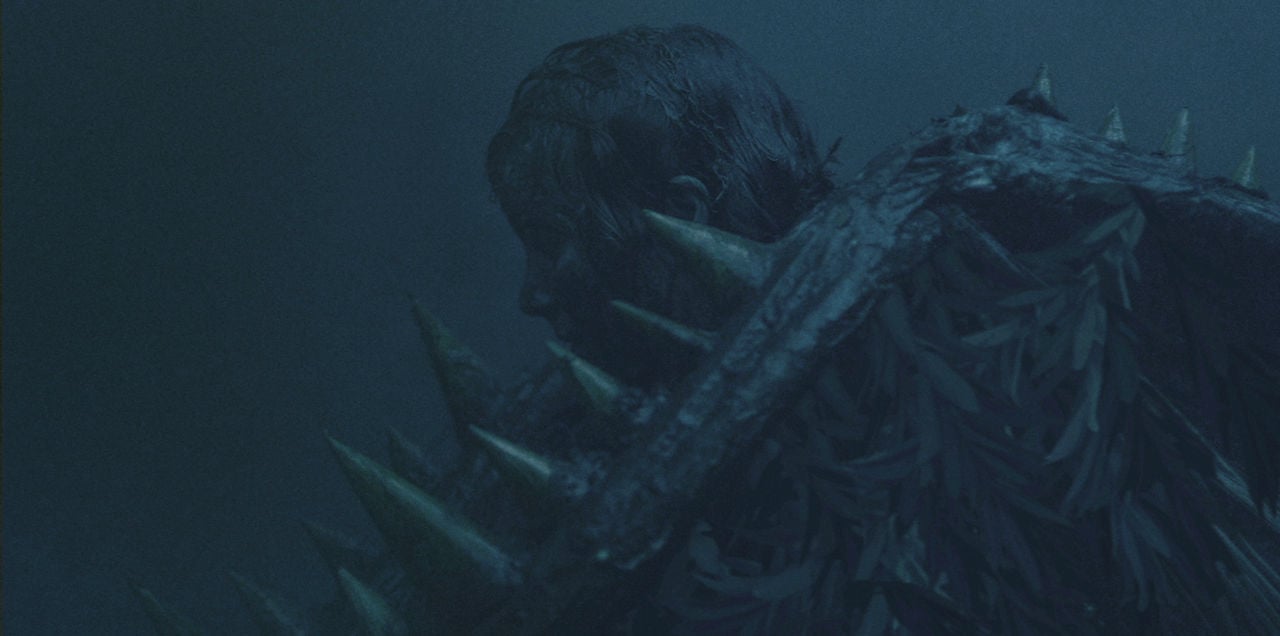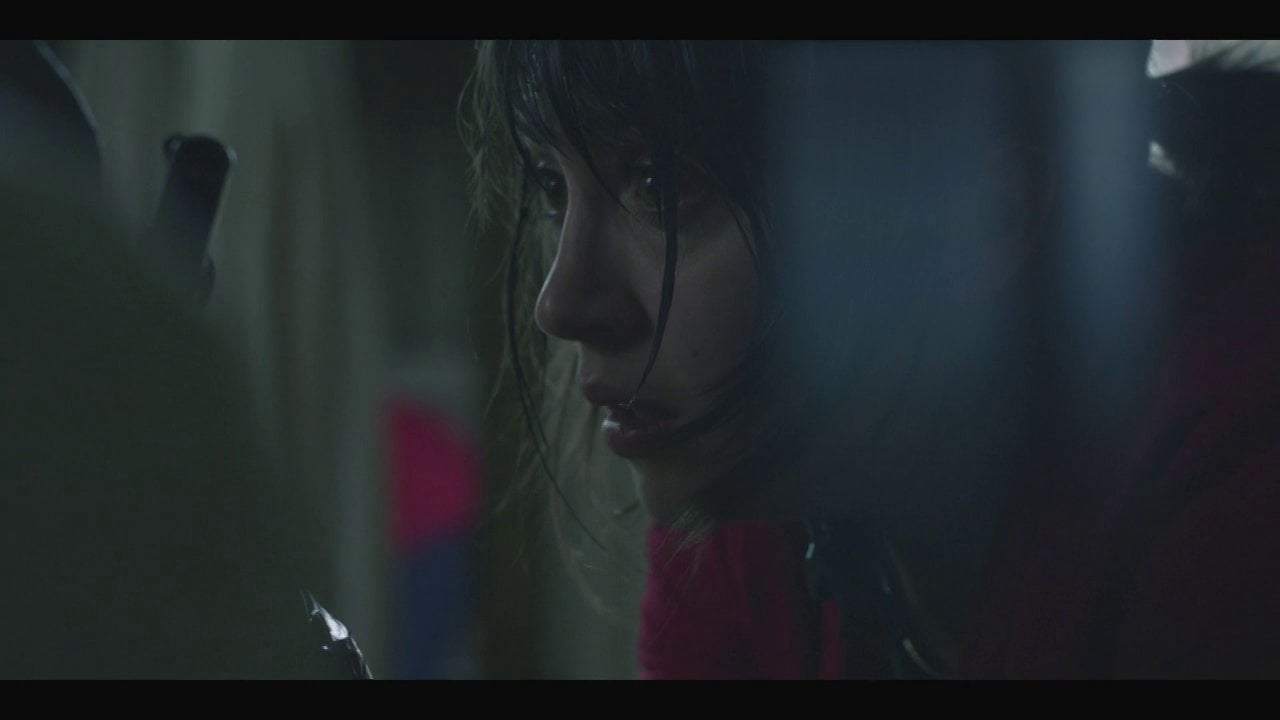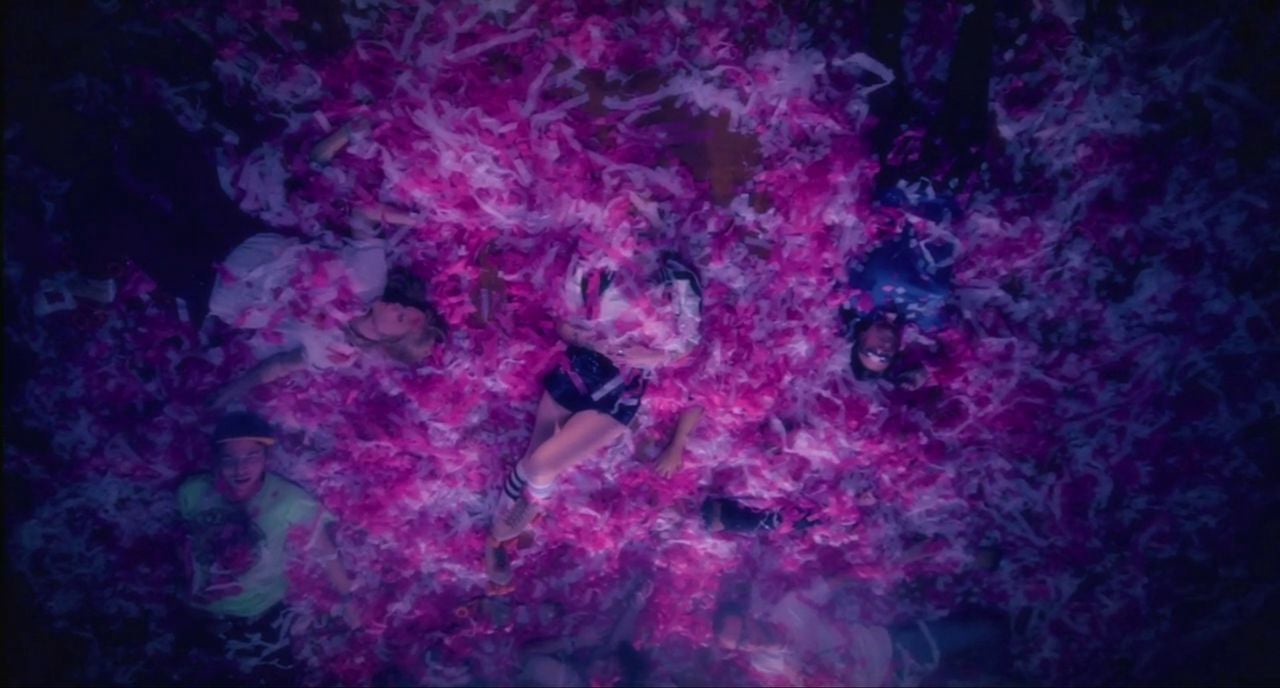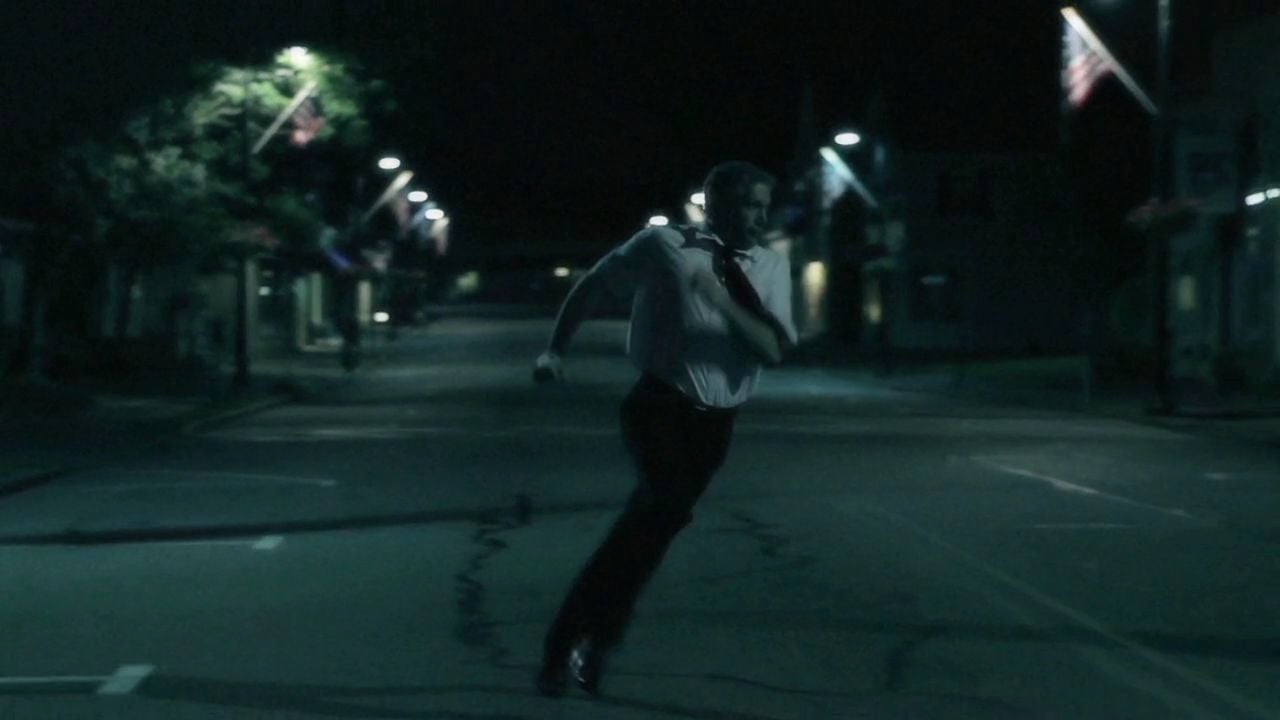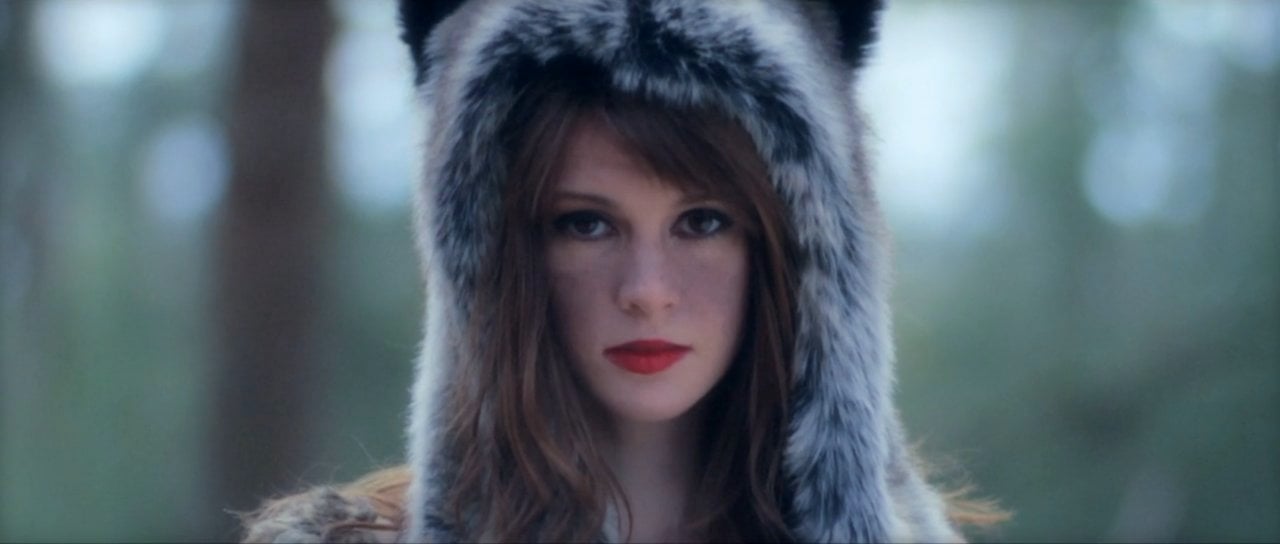What was your route into directing? Was it something that just seemed to grow naturally out of playing together and making up stories with each other as you were growing up?
A: I’d say so. We were both pretty imaginative as kids and being so close in age we both had similar interests growing up. Ben ended up going to film school, I went to art school. We reached a point where we’d both graduated college and were looking for the next step and it just kind of made sense for us to work together and to combine our creative interests.
B: It took us awhile to join forces in that way. We spent a lot of time in high school playing in a band together. I was consumed by music and playing the guitar. It wasn’t until later that I had anything to do with visual art. Alex was a visual artist from day one.
Did you watch a lot of movies growing up? And are they the same sorts of movies you still watch today?
A: Our parents are both big movie buffs and as a result movies have always been a part of our lives. Our friends growing up acted like our family lived at the movie theater, which is an exaggeration, but I guess compared to other families we did see a lot of films. Across all genres too.
B: I remember being in the 5th grade and retelling the entire plot of The Matrix to my best friend while we jumped on one of those big trampolines. No one had seen it. Our taste was probably not the greatest back then, but some of the films are still relevant to us now – I remember going with our parents to see Princess Mononoke at the Brattle in Harvard Square. Or like the Christopher Guest movies – Spinal Tap, Waiting For Guffman. We watched those as kids and I think I enjoy the humor in the same way that I did then. Any movie with Michael Keaton still holds up.
A: I think some of those nostalgic influences are still with us today. We both love anything with really good practical special effects or animatronic Jim Henson style creatures in it.
Is there a clear division of responsibilities – like is one of you more hands on when it comes to the cinematography and another more into the post or art direction side of your films? Or is it democratic throughout? The duo director dynamic is always really curious.
A: We come up with the concepts together and put the treatment together. Ben does a lot of the talking when projects are starting to come together. If we get the go-ahead, then we sit down and conceive of the shot list, which is a very specific process. We plan very carefully. I draw the storyboards for the shots we come up with. And then on set Ben is the loud one. His background is all film production, he’s the technical one.
B: Music videos usually shoot in one 14-hour day, so you can imagine how quickly you have to move through set-ups. It helps for one of us to be the mad man, while the other can hang back and make sure the mad man isn’t forgetting anything that we wanted to get. Then in post production, Alex edits the videos and I do the effects and color grading. Hopefully as our projects grow we’ll get to act more as a two-headed director, rather than dividing everything up the way we do now to get these jobs done.
When and why the move to LA from Mass? Don’t you miss the trees and the tranquility?!
B: I miss Massachusetts everyday. It’s where we grew up, our whole family is there, it makes sense to me. But it was clear that the only way to progress as filmmakers was to be in Los Angeles where everyone is making things. We met and started working with our rep Jamie at Lark and our executive producer Candice at Prettybird, and they are the only reason we get to do anything now with this stuff because they took a chance with us pitching on projects. That would have never happened if we hadn’t come to Los Angeles.
A: We’ve gone back to Massachusetts a few times since moving out west and we’ve actually shot a few of our videos there. Every time we go back I’m reminded of just how green and lush it is. Our hometown has a lot of quiet back roads and walking paths through the woods. Los Angeles has some areas of great natural beauty too but you have to drive through so much city to get there. When Ben and I watch other music videos that were shot around here we always look at the locations and say: “Where is that?! How did they find that?!”
Your Purity Ring promo feels like a scene from an epic fantasy adventure – how did the idea for that one develop? It’s like Labyrinth meets Willow meets Never Ending Story dragged into the present day with digital embellishments!
B: Thanks! That’s definitely the look we were going for, it’s great that it translated! I think I came up with that concept. I don’t remember how I thought of it. It’s easy to get caught up in the momentum of booking a job, it can happen really quickly, and so often we forget who came up with what or where it came from.
A: I think it came out of our desire to see a movie that looks like The Labyrinth or The Never Ending Story or The Empire Strikes Back made today. Ben and I often talk about how much we love the moody atmosphere of those movies combined with crazy sets and enormous monster costumes. We worked very closely with our production designer Erin on that one. None of us knew for sure how this stuff would translate once we stuck it in the pool but when we started filming people were coming up to the monitor and saying “It looks like the swamp from Star Wars!” And the little nerd in me gave a quiet jump for joy.
B: It was a really difficult video to make though. We built our set and the monster costume in our driveway, and then we shot it in a freezing pool in Brentwood all night. It was a brutal shoot, I don’t know how Megan did it, and she was so polite and never complained it was incredible, I’ve never seen anything like it. It was about as homemade as it gets.
I really enjoyed the 60s B-movie/Twilight Zone killer cars in your Volta Bureau promo – tell us about the planning that went into that one. And what was the shoot like?
A: The creative process is not always the most romantic thing. A lot of times we form an idea around what we think we have available to us. The idea for Volta Bureau came from this kind of thinking. We asked ourselves “What’s something we have easy access too? What’s something that everyone has? Everyone we know has a car. We’ll do something that involves cars!” Filtered through our mutual weird sense of humor that becomes “Wouldn’t it be funny to watch cars attacking people? They’re these big lumbering machines and the idea of a car sneaking up on someone and eating them is hilarious.”
B: It’s funny for awhile every video we made was from a concept that made us laugh, but then the final product would never be particularly funny. The first three were like that. And so it’s great that you bring up a 60’s B-Movie because that was the whole idea. We wanted to film the video with this very dark David Fincher inspired look, completely serious and straight faced in terms of performance, but then have the threat of these cars be this silly B-movie element.
A: We wanted it to feel like Christine mixed with Alfred Hitchcock’s The Birds.
Your work often has a moment of high drama or tension at its core – like the escape narrative in your TheWarOnDrugs video or the Matador in your Alt J promo. What is it that attracts you to that form of storytelling? It’s interesting to see because it means a lot of your videos feel like the climactic scenes from longer films. Is it a hankering to shoot a longer form narrative piece than music video usually allows?
B: To me it’s an effective tactic to get around the kind of tired “punchline” structure of a short film. I think it’s fun to watch something that feels like a small section taken from a longer movie because as an audience your imagination fills in what you think the rest of the film would ideally look like. I’ve honestly been more inspired by the trailers for movies like The Master, Girl With The Dragon Tattoo, and Where The Wild Things Are than the movies themselves, and I think it’s for the same reason.
A: We typically like to throw the viewer into the middle of a situation. Our videos tend to start with the protagonist having just had the rug pulled out from under them, whether they were just eaten by a giant monster or gored by a bull or thrown in a closet by a deranged cowboy. As the protagonist learns more about their situation, more is revealed to the viewer. It’s one way of holding an audience’s attention – by uncovering a mystery piece by piece. Hopefully the viewer’s impression of what they’re watching is always changing.
Speaking of your Alt J video it’s really quite something. There’s a mesmerising quality to the continuous roll and tumble of the camera move and the way the composited plates play with different senses of focus and depth. It’s interesting because it seems to mix the various elements of your work to date – the narrative, the drama, postproduction. Talk us through the concept and how you executed it in the shoot and post.
B: The concept came from the lyrics, which deal with the metaphor of a Matador.
A: Right away that stood out to us as a striking visual. You have the colorful costume of the matador in contrast with the enormous black bull.
B: I had an image of a Matador impaled by an impossibly large horn. Then we started thinking about the matador experiencing this pre-death fantasy, where slight glimpses of the chaos would keep entering his line of sight, but he’d be in this peaceful place so everything would be seen in this graceful slow motion – all the people fleeing, the popcorn flying, the chairs breaking. Bullfighting is a really terrible thing that we weren’t looking to romanticize, and we hope that the video is seen completely as a surreal metaphor. We made sure to do absolutely no research about bullfighting or Matadors, besides watching a Bugs Bunny cartoon.
Our shoot was one insane day. The biggest challenge was conceiving the shots so that we only needed our crowd for an hour in the middle of the day, and we only had 15 or 20 extras at that. The second challenge was how to put an actor on a running bull. This involved pre-planning and green screen. We’d shoot whatever shots we could get of the bull running and then later in the day shoot our matador Frankie on a green screen to match the angles that we had filmed of the bull. Then in post I composited the shots together.
A: It was a very post-heavy video. Almost everything is composited. Most of the debris was shot on a green screen and composited in. That last shot of the matador with the hole through him wasn’t a dummy or anything. It was all done in post. You also run into a situation where you put in a full day on set and everyone works so hard to pull it all off, but you still aren’t left with a video by the end of the day. You have pieces and components of footage, but you don’t have a story that anyone could sit down and watch and understand. You don’t actually have a shot of a man impaled on a bull which is the thing the whole video revolves around. I guess that’s the main motivation when you’re doing post production – you don’t want to let down all the people who’ve put forth so much effort by tripping at the finish line.
Where do you go for inspiration? Music? Galleries? Online?
B: Indeed! There is an art gallery in Pasadena that we go to as a sort of detox, the Norton Simon. It’s an unassuming building that has everything from Cezanne to Degas and Van Gogh, Picasso. It’s really insane. You are greeted by a room full of Degas sculptures and Van Gogh covering the walls. The front lawn is covered in Rodins. And its free for students, you can literally go there anytime you like if you kept your student ID.
A: A few times we’ve visited botanical gardens. Or taken walks around Runyon Canyon. Something about being around natural beauty helps stimulate the creative process, even when you’re thinking about people getting maimed or eaten or blown up.
B: Other than old pretentious art we love comedic stuff. There is an online comic that we’ve worshipped for years called Perry Bible Fellowship. Anything subversive and far-out like that. I recently read George Saunders’ In Persuasion Nation which I’ve been drawing a lot of inspiration from recently. We are obsessed with the show Frasier. And Dinosaurs, the Jim Henson show.
Are you working on anything else you can tell us about?
A: Our next video is for Drop The Lime’s No Sleep for the Wicked. It involves high school football and demonic possession. What’s not to love?
B: We have some more music videos coming up. There are some scripts I want to focus on trying to get somewhere that I’ve been writing for the past few years.

